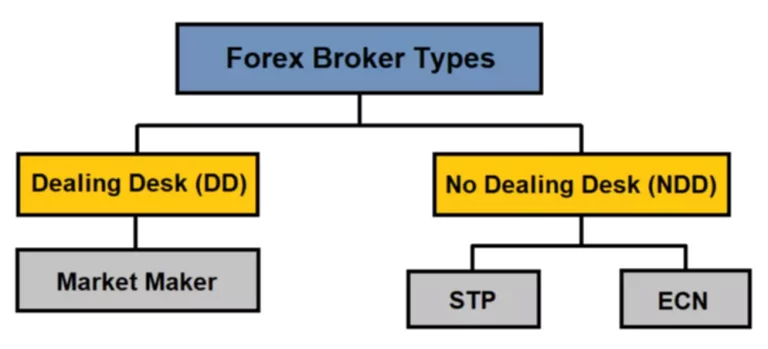The below visual illustrates how a conventional order book-based market maker features. SoFi has no management over the content, services or products provided nor the safety or privacy of knowledge transmitted to others via their website. We advocate that you evaluation the privateness coverage of the site you are getting into. SoFi does not assure or endorse the products, information or suggestions provided in any third party website. Learn extra about Consensus 2024, CoinDesk’s longest-running and most influential occasion that brings together all sides of crypto, blockchain and Web3.

A dealer inserting an order on a DEX interacts immediately with the liquidity pool. For instance, swapping ETH for USDT includes removing ETH from the pool and including an equivalent value of USDT minus the transaction fees. The good contract governing the pool processes the commerce, ensuring the pool remains balanced.
Liquidity Pool
The decentralized finance (DeFi) motion envisions a world the place borrowing, buying and selling, and different transactions occur with no centralized intermediary. At its coronary heart, DeFi protocols depend on good contracts and liquidity pools – or communal pots of tokens – to facilitate transactions without matching particular person patrons and sellers. In conventional markets, liquidity suppliers are typically giant financial institutions that preserve inventories of various property to facilitate buying and selling. These market makers earn a revenue by shopping for property at decrease costs and promoting them at larger costs, effectively bridging the gap between consumers and sellers. This mannequin ensures that someone is all the time prepared to purchase or promote an asset, thus sustaining market liquidity. Liquidity pools are smart contracts containing locked crypto tokens which were supplied by the platform’s customers.
Prices of our trades are additionally managed by this algorithm, based on the present and historical trades that occurred in that pool. So, no people are wanted on the opposite facet, to make the trade occur, as a result of everything that occurs is between you and a programmed algorithm that’s launched on a blockchain, and can’t be modified. With the Order Book, sellers will set the minimal worth of the belongings they need to promote, and consumers will set the utmost price they are prepared to pay for such assets. If the system matches the seller and purchaser, both with the same set price for the same merchandise, it finalizes the deal. To perceive the process clearly, you should know that, basically, trades were based mostly on so-called Order Books. In short, the concept of an Order Book is to match a purchaser with a seller, and eventually close their deal.
Liquidity Swimming Pools Summary
And in 2018, Uniswap, now one of the largest decentralized exchanges, popularized the overall idea of liquidity pools. This one change helped allow DeFi’s explosive progress of over the past a number of years, as it gave decentralized exchanges a means to offer liquidity utilizing crowdfunded pools and algorithms. While fixed products work for exchanging tokens, stablecoin fashions facilitate borrowing and lending activities. Liquidity swimming pools enable anyone to contribute tokens and become a liquidity provider.
Many DeFi platforms, corresponding to Sushiswap and PancakeSwap, offer incentivized swimming pools the place users can earn additional platform tokens in addition to the standard trading charges. These incentives assist bootstrap liquidity and appeal to more users to the platform. An AMM (automated market maker) is a type of decentralized exchange protocol that uses a specific algorithm to price tokens. The major benefit of crypto liquidity swimming pools is the potential to earn a yield on crypto that may in any other case be idle. With interest rates at historic lows, some buyers have begun trying past conventional products like certificates of deposit (CDs), Treasury bonds for yield. The primary objective of a liquidity pool in DeFi is to facilitate transactions without a centralized third party.
Developers can create new financial products and services that leverage these swimming pools, offering users more choices and alternatives. For instance, hybrid pools can mix options of single-asset and multi-asset pools, offering tailored solutions for different market wants. Furthermore, the programmability of smart contracts permits the combination of advanced features similar to impermanent loss protection, automated yield optimization, and customizable fee buildings liquidity pool definition. This flexibility fosters a dynamic DeFi ecosystem the place new and improved financial products could be developed and deployed quickly. To create a better buying and selling experience, various protocols offer even more incentives for customers to provide liquidity by providing more tokens for specific “incentivized” swimming pools. Participating in these incentivized liquidity swimming pools as a provider to get the maximum amount of LP tokens is known as liquidity mining.

Whether it’s a low cap cryptocurrency or penny inventory, slippage might be a priority when making an attempt to enter — or exit — any trade. Slippage is the difference between the expected worth of a commerce and the value at which it’s executed. Slippage is commonest in periods of higher volatility, and also can occur when a big order is executed but there is not enough quantity on the selected worth to hold up the bid-ask spread. Some DeFi platforms supply extra incentives for users to lock up tokens within the pool.
Liquidity Pool Tokens
This means it’s the middle point between what sellers are prepared to sell the asset for and the value at which patrons are keen to purchase it. However, low liquidity can incur extra slippage and the executed buying and selling value can far exceed the original market order price, relying on the bid-ask spread for the asset at any given time. When you’re ready to withdraw your property, your liquidity tokens are burned (or destroyed), and in return, you receive a portion of the liquidity pool’s property based mostly on your share.

On a decentralized trade, liquidity swimming pools are those that dictate the value of an asset — they aren’t impacted by bad mood or weather. The performance and threat are distributed across all members in a liquidity pool. This collective strategy means that the impact of a single asset’s volatility is lessened, providing a more stable return profile for LPs. For example, in a multi-asset pool, if one asset’s value declines, the overall impression on the pool may be mitigated by the steadiness or appreciation of other assets. This diversification makes liquidity swimming pools less dangerous than holding particular person risky assets. Another advanced feature of liquidity swimming pools is the governance rights that might be granted to LP token holders.
Dangers & Rewards For Lps
Users of DeFi protocols «lock» crypto assets into these contracts, called liquidity pools, so others can use them. Those who provide liquidity to liquidity swimming pools obtain tokens that divvy out rewards that come from trading charges. The rewards are proportional to the amount of worth locked into the protocol.

This makes liquidity provision attractive for crypto holders seeking to generate asset returns. Liquidity swimming pools are the spine of many decentralized exchanges (DEXs), representing a paradigm shift in how trades are made and orders are stuffed. At their core, they’re blockchain sensible contracts that lock up funds, creating a pool of tokens that users can commerce in opposition to. Participating in crypto liquidity pools requires collaborating in decentralized finance. This typically entails creating an account on a decentralized exchange, exchanging a token you’ve for an LP token, and locking up the token in the platform.
The more liquidity a provider contributes, the bigger the proportion of the charges they receive. Liquidity suppliers can later redeem their share of the pool by burning their liquidity tokens. However, anticipated price changes and flash loan attacks can even impression the worth of property in a liquidity pool. Liquidity swimming pools are also important for yield farming and blockchain-based on-line video games.
LP tokens are not solely a representation of a user’s share in the liquidity pool but in addition a flexible asset that can be additional utilized in other DeFi actions. One of the preferred makes use of of LP tokens is in yield farming and staking protocols. Yield farming entails staking or lending crypto belongings to generate high returns or rewards in the form of further cryptocurrency. Liquid providers can earn further rewards by staking LP tokens on numerous https://www.xcritical.com/ platforms, enhancing their general returns. This dual-earning potential—earning charges from the liquidity pool and rewards from staking—makes liquidity provision a beautiful possibility for crypto traders in search of to maximise their returns. Liquidity pools aim to unravel the issue of illiquid markets by incentivizing customers themselves to provide crypto liquidity for a share of trading charges.
These pools can present greater flexibility and cater to specific wants throughout the DeFi ecosystem. Until DeFi solves the transactional nature of liquidity, there is not a lot change on the horizon for liquidity swimming pools. Nansen, a blockchain analytics platform, discovered that 42% of yield farmers who provide liquidity to a pool on the launch day exit the pool inside 24 hours. Cryptopedia doesn’t guarantee the reliability of the Site content material and shall not be held responsible for any errors, omissions, or inaccuracies. The opinions and views expressed in any Cryptopedia article are solely those of the author(s) and don’t reflect the opinions of Gemini or its management.
In conventional finance, liquidity is provided by market makers who buy and sell property to guarantee that trades may be executed efficiently. In DeFi, liquidity swimming pools substitute these intermediaries by permitting users to deposit their property into the pool, thereby turning into liquidity providers. Before automated market makers (AMMs) got here into play, crypto market liquidity was a problem for DEXs on Ethereum. At that time, DEXs were a new technology with an advanced interface and the number of consumers and sellers was small, so it was difficult to search out sufficient people keen to commerce frequently.
Diy Crypto Plans
In return for locking their tokens, individuals receive rewards, usually in the type of further tokens. Staking swimming pools are vital for sustaining blockchain networks using proof-of-stake (PoS) or delegated (DPoS) consensus mechanisms. The variety of liquidity tokens received by a liquidity supplier is proportional to their contribution to the pool. For instance, when you contribute 1% of the pool’s complete liquidity, you would receive LP tokens that represent 1% of the total issued LP tokens.

 НОВОСТИ
НОВОСТИ Half-Life
Half-Life Half-Life 2
Half-Life 2


